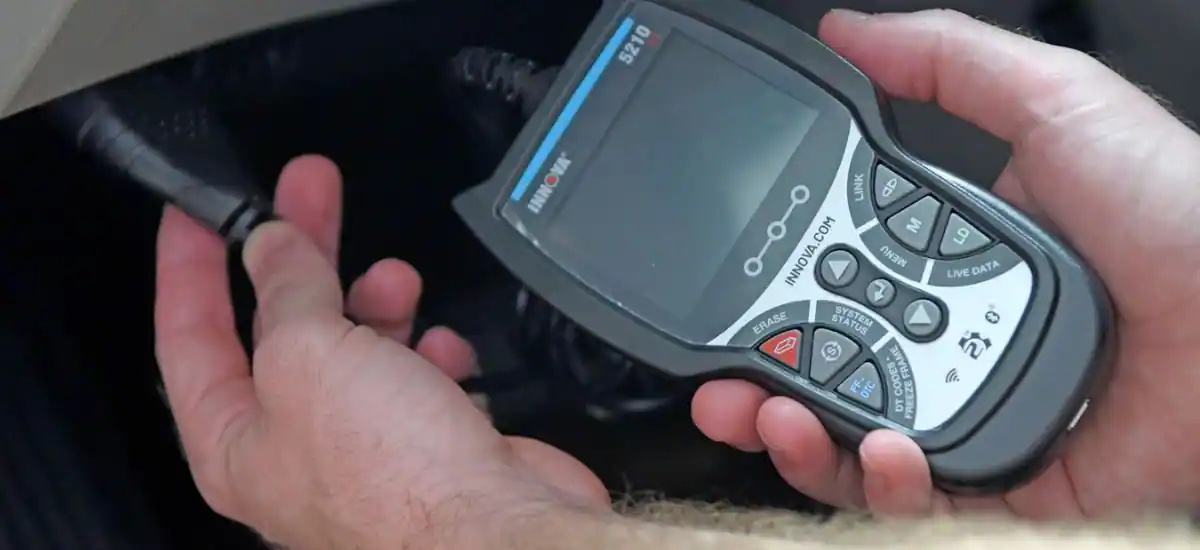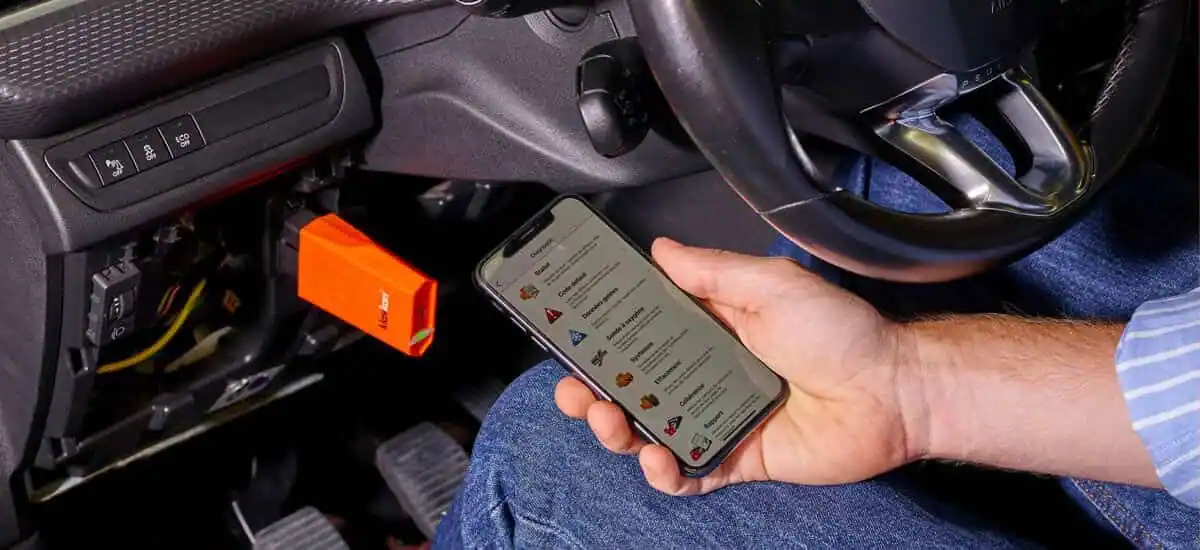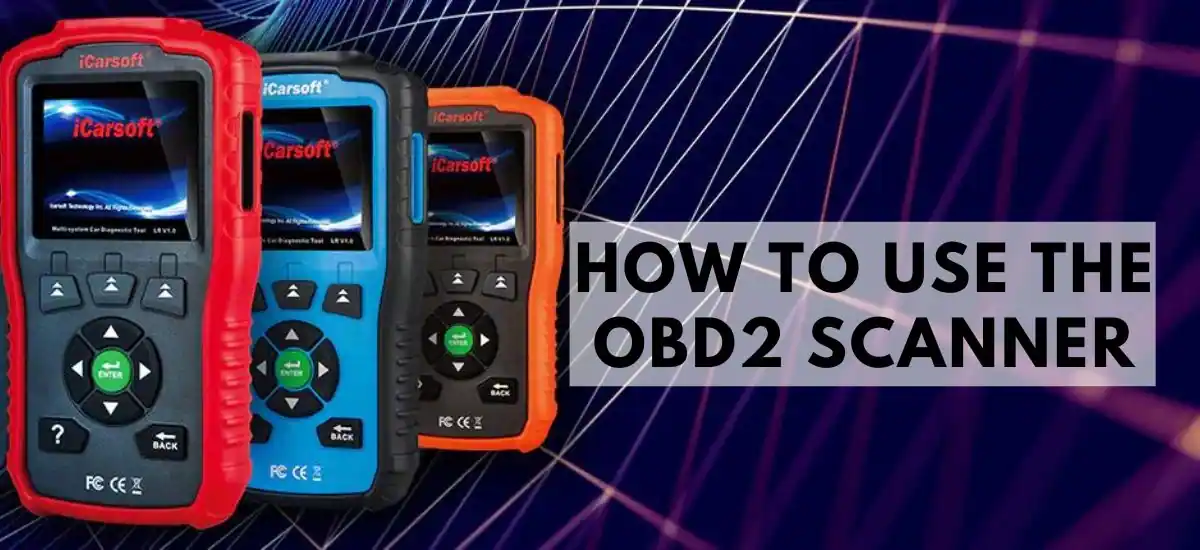Cars nowadays are just like advanced computers on wheels. You can witness so many advanced technologies in cars that can read the potential threats for car owners. The OBD2 scanner is one of those advanced technologies. But, how to use the OBD2 scanner in the car. Here is the process.
- Find out the Diagnostic Link Connector.
- Join the OBD2 scanner to the DLC.
- Enter the data that you will be requested to do on the screen on the scanner.
- Gain access to the menu of the scanner to see the OBD codes.
- Understand the codes properly.
- Go for the option Trouble Code Diagnosis.
- Now, you have to reset the option: Check Engine Light.
The OBD scanner is generally considered a diagnostic tool. You can connect it through the Diagnostic Link Connector, using Bluetooth, Wi-Fi, or a weird connection.
To know more about the OBD scanners, read the below sections.
What Is An OBD Scanner?
An OBD is On Board Diagnostics. Today’s cars are built with multiple special features and an OBD scanner is one of them. Cars nowadays include an advanced in-built system, known as an OBD scanner.
Its task is to monitor and save all the information it finds out from the ECU or the Electronic Control Units. Now, if your vehicle is developed in the year 1996 or later, you will be able to use an OBD reader in it.
In case the car or the vehicle is built before 1996, you may opt for an OBD1 scanner for it.
The History Of The OBD Scanner

The history of the OBD scanner is traced back to 1968 when OBD was first introduced by the Volkswagon group. In 1975, major automobile companies adopted the Bendix EFI and Bosch system to enhance the emissions of the tailpipe.
The first data link was introduced by General Motors in the year 1980 on their model Eldorado and Seville. DTC or Diagnostic Trouble Codes were displayed on the screen in diagnostic mode using the electronic climate control system. In 1981, this same automobile company launched Computer Command Control systems in all the vehicles in the United States.
In 1986, again, an advanced version of the ALDL protocol was launched by General Motors. After that, we saw the first OBD I scanners in the models launched by the California Air Resources Board. However, they did not apply this name until the OBD II scanner was introduced.
In 1996, the United States makes OBD II mandatory for all car models that are to be sold in this country. In New Zealand and Australia, all car models started using OBD II after rules were passed on 1st January 2006.
After that, multiple rules were changed regarding the OBD II scanner, and finally, in 2010, the United States made the HDOBD mandatory for particular commercial engines.
What Is OBD1?
OBD1 is the short form of On-Board Diagnostics. This is an automotive term that is used to describe the auto-reporting and self-diagnostic abilities of a vehicle. An OBD port is the same as a plug that helps the owners of the cars with diagnostic devices, including Bouncie.
You need to insert this into your car or vehicle that you have and then you will be able to monitor the car and find out potential threats.
What Is OBD2?
The OBD2 is also the On-Board Diagnostics. But, it is an advanced and upgraded version of the OBD1 scanners. You will be able to use the telematic devices and get help from them to process data using an OBD2 scanner.
You will be able to find out information such as the speed of the vehicle, revolutions of the engine, usage of fuel, fault code, and a lot more things. Now, when you have all the data, you can decide the start and finish of the trip, using these telematic devices.
How Does An OBD Scanner Work?
So, an OBD scanner is like a car code reader. To work with an OBD scanner, you just need to plug this scanner into your vehicle or your car. Or, you will be able to connect the OBD scanner using Bluetooth.
Once connected, you will be able to notice the diagnostic codes on the screen of the scanner. This is how you will be able to understand what kind of threats your vehicle is going through and what you should do to fix it. Now, if your vehicle is developed in the year 1996 or later, you will be able to use an OBD 2 scanner in it. In case the car or the vehicle is built before 1996, you may opt for an OBD1 scanner for it.
Which Codes Do OBD2 Scanners Read?

Usually, OBD2 is a scanner or car code reader that can scan the trouble codes of your vehicle. Now, you will see that the OBD2 scanner will be able to read four different types of codes. They are P, B, C, and U.
Here P indicates the powertrain systems like transmission and engine. B here stands for Body. C indicates the chassis, and U stands for writing system and networks.
Different Types Of OBD2 Diagnostic Tools And Their Prices
Here are some of the best OBD II scanners and their prices.
- Innova OBD2 Scanner Overall- $376
- BlueDriver OBD2 Scanner for Smartphones- $120
- Bosch Professional OBD2 Scanner- $4,820
- FIXD Leave-It-In-All-The-Time OBD2 Scanner for Bluetooth Dongle- $40
- Auto MaxiDiag MD808 Pro- $280
- Ancel BD310 Bluetooth handheld OBD2 Scanner- $63
- Keeno OBD2 Scanner Cable With USB Port Connection (For Windows)- $14
Frequently Asked Questions-
1. How do you use the OBD II scanner?
Here is how you will be able to use an OBD II scanner as an advanced technology for your car.
- Find out the Diagnostic Link Connector.
- Join the OBD2 scanner to the DLC.
- Enter the data that you will be requested to do on the screen on the scanner.
- Gain access to the menu of the scanner to see the OBD codes.
- Understand the codes properly.
- Go for the option Trouble Code Diagnosis.
- Now, you have to reset the option: Check Engine Light.
2. Does the car have to be running to use the OBD2 scanner?
No, the cars do not need to be running if you want to use an OBD2 scanner. Car owners just have to use the key ignition in the right position. This way, it will receive power.
3. What Things Should You Consider While Buying An OBD2 Scanner?
There are several things that you should consider before buying an OBD2 scanner. Here they are:
- Software compatibility
- Which software it supports
- Support mechanisms
- Available updates
- Prices
- Reviews
Conclusion
The OBD II scanners are one of the major components of a car and it does matter if it is an in-built one, a handheld scanner, or a Bluetooth scanner. Also, an OBD II scanner includes an ASE-certified mechanism that successfully scans all the issues related to your vehicle. The only thing you have to do is to fix the issue that you find out using the OBD2 scanner.
Check More Posts :

